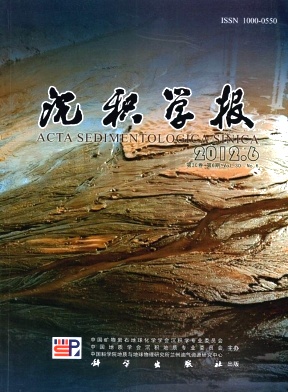The Reservoir Space Characteristics and Origins of Lucaogou Formation Source Rock Oil in the Malang Sag
- Publish Date: 2012-12-10
-
Key words:
- unconventional hydrocarbons
Abstract: The lithology of source rock oil reservoir of Lucaogou Formation in Malang sag is diverse and it mainly has mudstone, carbonatite, the transition lithology between carbonatite and mudstone, tuffaceous mud and small amounts of micrite, dolomicrite, tuff and so on. It is characterized by the lamina structure and the thickness of the lamina is 0.1~10 mm. Based on the foundation of the observation of rock cores and cast slice, the macro and micro characteristics of the reservoir of Lucaogou Formation source rock oil in the Malang sag are studied in this paper combining with many methods of experimental analysis, such as Ariron polishing, scanning electronic microscopy(SEM)in the field emission environment, electron backscattering diffraction, Xray energy spectrum, Xray diffraction, petrographic microscope, fluorescent light, and so on. The reservoir space of Lucaogou Formation source rock oil can be divided into five basic types—primary pores, secondary dissolution pores, organic hydrocarbon generating residual pores, cracks and fractures between layers of lamina and so on. Primary pores include intergranular pores which mainly exist between rigid particles and intercrystal pores which exist mainly between quartz crystals and carbonate mineral crystals. Mainly secondary pores are intergranular and intragranular dissolved pores, dissolution fractures as well as caverns in the matrix. Secondary pores formed by the dissolution of the the iron calcite in shale rock samples can be seen in the scanning electron microscopy (SEM). Dissolution fractures are formed by the all or part of dissolution of the fractures in acid fluid which are already filled with calcite first. Matrix type dissolution pores are mainly formed by the dissolution of unstable minerals in the matrix of the fine grain scattered rocks, which are commonly developed and scattered distributed. After the argon polishing rock surface, nm to micron grade dissolution holes can be seen in the scanning electron microscopy. This kind of pores mainly develops in calcareous mudstone, argillaceous limestone, dolomitic mudstone and mudstone. Pores formed by the thermal evolution of organic matter, called organic matter pores, commonly have regular shapes, indentation forms, honeycomb forms and their sizes range from dozens of nanometer to hundreds of nanometer. Porosity are positively correlated with TOC, indicating that residual organic matter hydrocarbon generation pores play an important part in the hydrocarbon source rock reservoir space. The linear density of cracks of source rock oil reservoir of Lucaogou Formation in Malang sag could reach a hundred per meter and are mostly vertical cracks, followed by horizontal crack and high angle oblique crack. The development of the cracks is influenced by brittle mineral content, bed thickness and so on. The survey region is rich in lamina. The slippage between layers and broken cracks in laminite formed the important basis of reservoir space. As a highquality hydrocarbon source rocks, the hydrocarbon generated in laminite can concentrate in reservoir space after an extremely short of primary migration, which is beneficial to the concentration of oil source rocks. Large mounts of nanometer to micron level micro pores and micro cracks develop in the source rock oil reservoir of Lucaogou Formation and their sizes are basically bigger than the diameter of liquid hydrocarbon molecules, so they could form effective reservoir space.
| Citation: | The Reservoir Space Characteristics and Origins of Lucaogou Formation Source Rock Oil in the Malang Sag[J]. Acta Sedimentologica Sinica, 2012, 30(6): 1115-1122. |






 DownLoad:
DownLoad: